Soluble and Insoluble Fiber
What's the Difference?
If you were to pick between soluble and insoluble fiber as having the most health benefits, which one would you choose? Well, there's no winner here because both act in different ways in the body and help protect against different conditions, so your best bet would be to include both ;-)
What are the differences between them and how do they work together to keep us in good health? Read
on...
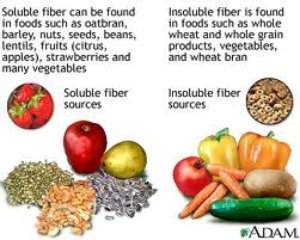
Most plants contain some soluble and insoluble fiber in varying proportions, but they usually have more of one kind than the other.
Both types of fiber pass through the intestine without being absorbed, but that's where the similarity ends.
Soluble and insoluble fiber act in totally different ways, says Barbara Hartland, Ph.D. RD, professor of nutrition at Howard University in Washington, D.C., and as a result, they help protect against different conditions.
For example, if you have high cholesterol, you might want to eat more soluble fiber, which can help lower the amount of LDL cholesterol in your bloodstream.
If you have a family history of colon cancer, however, you might want to get more of the insoluble kind.
A recent Japanese study published in the Journal of Epidemiology found a decreased risk of colon cancer with increased intakes of insoluble fiber.
Don't worry too much about the kind of fiber you're getting, however, Dr. Hartland says. If you eat a lot of fruits, vegetables, whole grains and legumes you'll automatically get the healing benefits of both types of fiber.
The Healing Power of Soluble Fiber
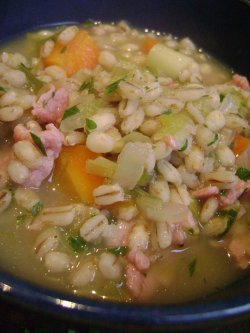
Many of the things that cause disease, from chemicals in the environment to too much cholesterol in the diet, make their first assault in the digestive tract.
Suppose there's a harmful substance inside the stool, for example. As it rubs against the colon wall, it can damage sensitive cells, possibly increasing the risk of cancer.
When soluble fiber dissolves and blends with water in the digestive tract, it forms a sticky gel that acts like a protective coating, preventing harmful substances from doing damage, says Dr. Hartland.
To give another example, if you were to eat beans with a steak, the soluble fiber in the beans would turn into a gel, trapping molecules of cholesterol from the steak and preventing them from getting into your body.
And because the fiber isn't absorbed, it passes out of the body into your stool, taking the cholesterol with it, explains Beth Kunkel, Ph.D., RD, professor of food and nutrition at Clemson University in South Carolina.
Types of soluble fiber are gums, mucilage and pectin.
Good sources of soluble fiber include barley, beans and peas, lentils, oat bran, fruits and vegetables.
Soluble Fiber and Cholesterol
Soluble fiber binds to bile acids and forces their excretion, which causes the body to make more bile acid. This process requires cholesterol, so the amount of cholesterol circulating in the blood is reduced.
Some researchers theorize that the bile acids carried out of the intestines by some types of soluble fiber may act as cancer-promoters once they reach the colon. Thus, high-fiber consumption may be a trade-off between lowering cholesterol and increasing the risk of cancer.
This could be offset, however, by the action of insoluble fiber in sweeping out the colon with regular bowel movements. So both soluble and insoluble fiber act together to protect us from disease.
Various types of soluble fiber, such as gums, mucilages, pectin and algal polysaccharides, lower cholesterol by binding the cholesterol and bile acids in the gut and promoting their excretion.
Further Reading: Foods that Help Lower Cholesterol
Soluble Fiber and Blood Sugar
Soluble fiber is useful in the management of diabetes, hypoglycemia, hyperglycemia and other conditions that are affected by the quick breakdown of carbohydrates into glucose, a form of sugar.
Soluble fiber retards the absorption of glucose, allowing the body to release it into the bloodstream gradually. This is how it moderates blood sugar levels.
Foods that have been processed such as canned vegetables and fruits, instant rice, or quick-cooking grain cereals, have been stripped of fiber and are not able to retard sudden rises in blood sugar.
This is why you need to eat foods that are rich in fiber, as well as raw foods, as they're naturally high in fiber. They're filling and prevent overeating; plus they have abundant nutrients and enzymes required to maintain health.
Further Reading: Healing Foods for Diabetes
The Healing Power of Insoluble Fiber
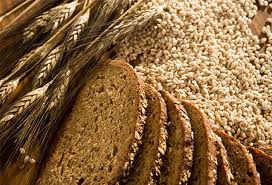
The remarkable thing about insoluble fiber, is that it leaves the digestive system in very nearly the same condition in which it went in, and this is where the benefits of fiber come in.
Insoluble fiber doesn't dissolve in water like soluble fiber but it's incredibly absorbent.
It can soak up many times its weight in water as it passes through the intestines. For example, cellulose in wheat bran absorbs three times its weight in water.
As a result, it causes stools to become larger, softer and easier to pass, which is why doctors recommend that people with constipation and other digestive complaints eat more insoluble fiber.
Insoluble fiber helps in yet another way. Because it causes stools to become larger, the intestine is able to move them along more quickly. As a result, insoluble fiber speeds up transit time and gastric emptying.
This is very important, because the more time stools and any harmful compounds they contain stay in the colon, the more likely they are to damage cells and kick off the cancer process, Dr. Kunkel says.
Types of insoluble fiber are celluose, hemicellulose and lignin.
Food sources of insoluble fiber include whole grains, brown rice, nuts, vegetables and fruits.
Main differences between
soluble and insoluble fiber
Insoluble fiber appeases the appetite, reduces bacterial toxins, speeds the elimination of waste, absorbs toxins, soften stools and improves bowel disorders.
It's less effective in lowering serum cholesterol, speeding bile acid excretion and reducing gas. Also, it doesn't give a full feeling for a prolonged period or stabilizes blood sugar like soluble fiber does.
Soluble fiber is more effective at lowering cholesterol and removing fat from the gastrointestinal tract.
Most plants contain various proportions of both soluble and insoluble fiber. For example, rice bran contains mostly insoluble fiber and oat bran contains a type of soluble fiber called beta-glucans, but both seem to be able to reduce cholesterol, although rice bran is more effective at relieving constipation.
Psyllium seed, which is a soluble fiber, acts as both a soluble and insoluble fiber, lowering cholesterol levels like soluble fiber, and scrubbing through the intestines and cleaning them of potential carcinogens like insoluble fiber.
How Soluble and Insoluble Fiber Work Together
Soluble and insoluble fiber may act in different ways, but they combine their talents in helping us lose weight.
Fiber is an incredibly powerful tool for controlling weight, says Dr. Hartland. Since food that are high in fiber are very filling, you'll naturally eat a little less.
Plus, when you're eating more fiber-rich foods, you'll automatically eat less of other more fattening foods.
Fiber Related Pages:
Benefits of Fiber and High Fiber Foods in the Diet
Soluble and Insoluble Fiber - What's the Difference?
The Best High Fiber Diet Plan That Can Help You Relieve
Constipation
How to Select the Best Foods That Relieve Constipation
- Home --->
- Benefits of Fiber --->
- Soluble and Insoluble Fiber
Search for information on this site:
Receive Discover the Power of Healing Foods! Free
Newsletter
Fiber Mini-Series
Benefits of Fiber and High Fiber Foods in Your Diet
The Best High Fiber Diet Plan That Can
Help
You Relieve Constipation
How to Select the Best Foods That Relieve Constipation
Most Popular
Pages:
The Best "Fish Oil" Supplement is Not Made from Fish
Bananas for High Blood
Pressure

Elimination Diet for IBS and Other Food
Sensitivities
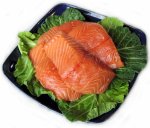
Healing Foods for Heart
Disease

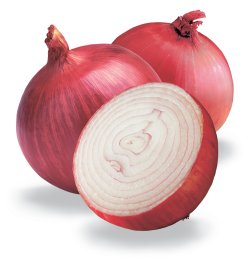
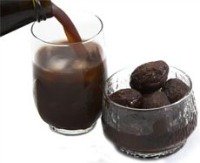

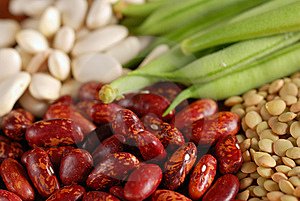


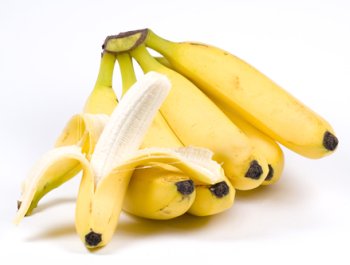
New! Comments
Have your say about what you just read! Leave me a comment in the box below.